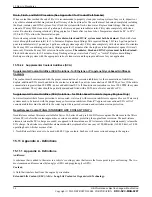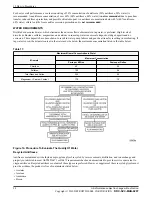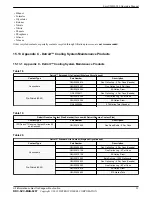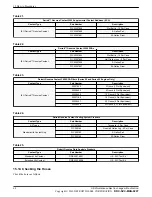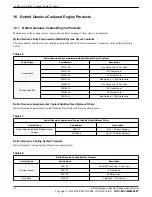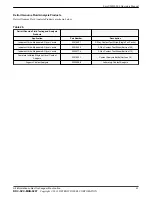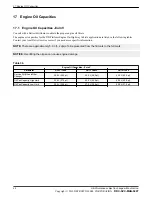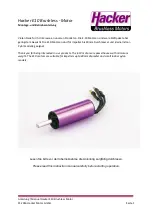
5.
With the accelerator pedal in the idle position, start the engine.
6.
Crank engine for 20 seconds.
NOTE:
The starting cycle can be repeated up to three times.
7.
If engine does not start, allow for a 60-second cool down and repeat previous step.
8.
Monitor the oil pressure gauge or indicator lamp. Keep the engine running at an idling speed until a stable oil pressure
reading of 97 kPa (14 psi) or more is maintained for one minute.
9.
Check for leaks.
10.
Allow the engine to reach operating temperature of 60° C (140° F).
NOTICE:
Increasing engine speed above idle before oil pressure has stabilized may cause severe engine
damage.
11.
Increase engine speed to 1800 rpm for three minutes.
12.
Return the engine to idle and allow to idle for approximately one minute, then shut down the engine.
13.
Check for leaks.
14.
If engine still fails to start, contact an authorized Detroit™ repair facility.
15.5 How to Clean an Engine
Observance of all environmental protection regulations is required. Use high-pressure equipment as follows:
CAUTION: EYE INJURY
To avoid injury from flying debris, wear a face shield or goggles.
NOTICE:
To prevent damage to engine components, keep the water moving at all times while cleaning. Never
direct water onto electrical components, plug connectors, seals or flexible hoses.
Information on suitable cleaning and protective products is available from any authorized dealer. Note the equipment
manufacturer's operating instructions.
Use the following minimum working distance between the high-pressure nozzle and the surface being cleaned:
• Approximately 28 in. (700 mm) for circular pattern jets
• Approximately 12 in. (300 mm) for 25-degree flat jets and dirt cutters
Power clean the engine as follows:
1.
Allow engine to cool down to room temperature before spraying the engine.
NOTICE:
Avoid all of the electrical connections with direct water or steam spray or damage can result.
2.
Thoroughly clean the entire engine using a steam cleaner or high pressure washer with mild soap and warm water.
WARNING: EYE INJURY
To avoid injury from flying debris when using compressed air, wear adequate eye protection (face
shield or safety goggles) and do not exceed 276 kPa (40 psi) air pressure.
NOTE:
Do not use compressed air or pressurized water to clean or dry the engine if any part of the engine is
disassembled.
3.
Once the engine is clean, blow the electrical connectors dry with compressed air to remove most of the standing water.
4.
Allow the engine to dry completely before making any kind of repair.
15 How to Procedures
50
All information subject to change without notice.
Copyright © 2019 DETROIT DIESEL CORPORATION
DDC-SVC-MAN-0207





















